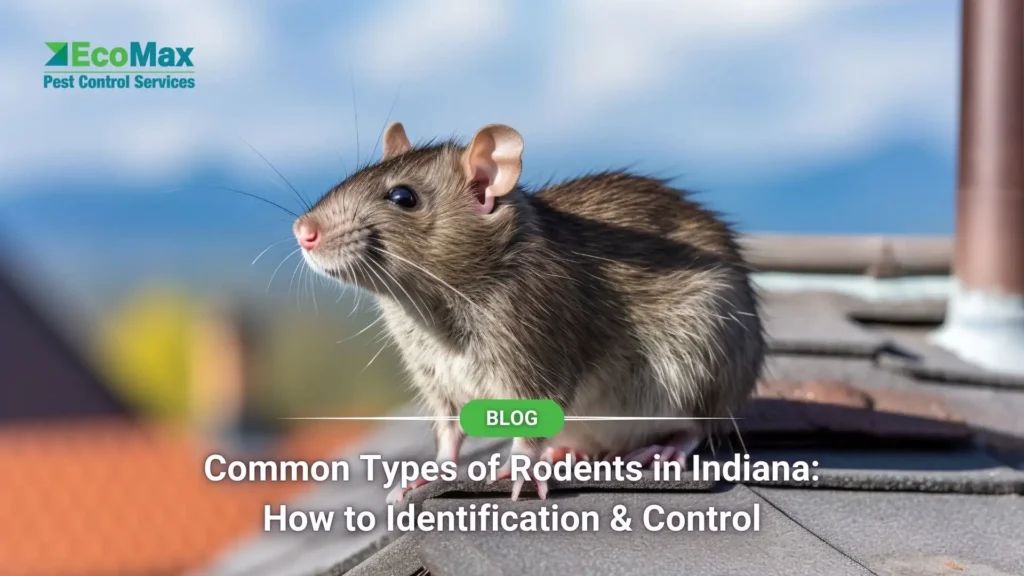Rodent problems are more common than many homeowners in Indiana realize. With nearly 20% of households experiencing infestations each year, the impact is not just practical—it strikes at the heart of our sense of safety and well-being. The thought of unwanted intruders scurrying through our living spaces is both frustrating and emotionally distressing. Yet, knowledge is our best weapon. Understanding these pests is essential for safeguarding your health and property, and this guide offers clear, factual information along with effective methods to identify and control them.
Overview of Rodents in Indiana
Indiana’s diverse landscapes—from urban centers like Indianapolis to expansive rural farmlands—host over 13 rodent species. These adaptable creatures are hunting for food, shelter, and warmth. Here’s a snapshot of Indiana’s most common invaders:
| Rodent | Key Traits | Habitat |
|---|---|---|
| House Mice | 6–10 inches, gray-brown, rapid breeders | Homes, barns, attics |
| Roof Rats | Agile climbers, prefer attics/ceilings | Trees, rooftops, attics |
| Eastern Gray Squirrel | Bushy tail, agile, and active in suburban areas | Forests, yards |
| Voles | Small, stocky, excellent tunnelers | Grasslands, gardens |
| Chipmunks | Striped, energetic, dig extensive burrows | Wooded areas, suburban gardens |
| American Beaver | Large, dam builders, ecosystem engineers | Rivers, lakes |
Did You Know? “In Indiana, roof rats—often seen in attics and along trees—are especially adept climbers, making them a persistent challenge for homeowners.”
House Mice in Indiana: Silent Home Invaders
House mice (Mus musculus) are prolific breeders that thrive in both urban and rural settings. Their small size makes them difficult to spot until an infestation takes hold.
Signs of Infestation:
- Droppings: Tiny, rice-sized pellets near food storage areas.
- Gnaw Marks: Chewed wires, baseboards, or food packaging.
- Nests: Bundles of shredded material hidden within walls or attics.
Control Tips:
- Seal gaps larger than ¼ inch using steel wool or caulk.
- Store food in airtight containers to eliminate attractants.
- Use snap traps (baited with peanut butter) for humane and effective removal.
Roof Rats: Indiana’s Stealthy Climbers
Roof rats are known for their agility and ability to access high areas, such as attics and tree canopies, making them particularly challenging to control.
Identifying Roof Rats:
- Size & Appearance: Typically 6–8 inches, slender build with a long tail.
- Habitat: Often found in attics, on rooftops, or in trees near homes.
- Behavior: Nocturnal and excellent climbers; frequently contaminate stored food.
Control Tips:
- Regularly inspect your attic and roof areas for signs of nesting.
- Trim tree branches that overhang your roof to reduce access.
Squirrels & Chipmunks: Furry but Destructive
Eastern gray squirrels and chipmunks may appear charming, yet they can cause significant damage when they invade attics or gardens.
Common Problems:
- Attic Damage: Chewed wiring, insulation, and structural materials.
- Garden Losses: Chipmunks and voles can decimate crops and ornamental plants.
- Food Contamination: Squirrels raiding bird feeders and storage areas.
Prevention Strategies:
- Install chimney caps and trim nearby tree branches to keep these animals at bay.
- Use weight-activated bird feeders designed to deter squirrels.
- For stubborn cases, pest team of local experts provides humane trapping and exclusion solutions.
DIY vs. Professional Rodent Control in Indiana:
Balancing DIY efforts with professional interventions is key to effective rodent control. Here’s a breakdown of both approaches:
DIY Methods:
- Snap Traps: When placed correctly, snap traps can be highly effective for small infestations.
- Ultrasonic Repellents: These may offer temporary relief, though rodents can quickly adapt.
- Natural Repellents: Items like peppermint oil can deter mice, but they won’t eliminate established nests.
When to Call the Pros:
Large-scale infestations, structural damage from chewed wiring, and potential health risks necessitate professional treatment. This is where ECO MAX comes in. ECO MAX is Indiana’s trusted, eco-friendly pest control partner. With a commitment to sustainable, effective solutions, they can proudly serves Indianapolis, Fort Wayne, South Bend, Evansville, Carmel, and other communities throughout the state.
Seasonal Rodent Trends in Indiana
Rodent behavior shifts with the seasons, so staying proactive is essential.
- Winter: As temperatures drop below 40°F, rodents seek indoor warmth. Seal entry points early to prevent infestations.
- Spring: Squirrels and chipmunks ramp up their activity—be vigilant for unusual attic noises.
- Summer: Roof rats thrive on warm nights; secure outdoor food sources.
- Fall: Mice begin to stockpile food; inspect storage areas and pantries regularly.
Final Reflections
From stealthy house mice to agile roof rats and disruptive squirrels, Indiana’s rodent challenges require proactive, tailored solutions. By understanding these pests and knowing when to rely on expert help, you can protect your home and enjoy peace of mind.

